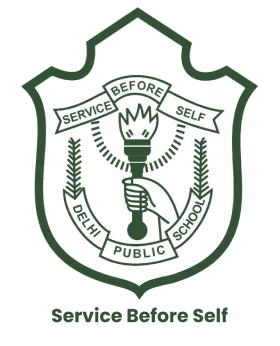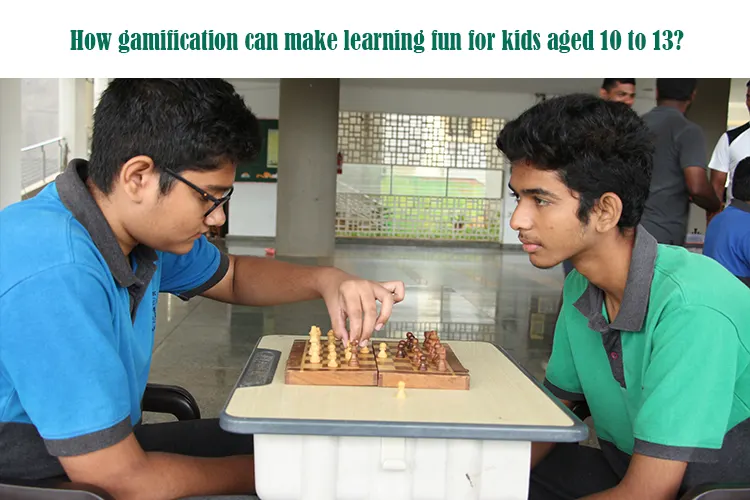Since a large portion of our lives are now conducted online, it is hard to deny the role of technology in education. The gamification process is one technique that draws a lot of interest in the field of education by implementing loads of fun learning activities for kids. Teachers at DPS Warangal, the best CBSE school in Warangal, Telangana include educational games for kids by introducing the basic components of games in their teaching process.
Let’s learn more about gamification and the revolutionary effects fun learning activities for kids can produce. Playing games with young children aged ten to thirteen makes learning interesting for them. We know children enjoy participating in educational activities for kids learning, making pedagogy better with game-based learning that students benefit from.
What is gamification for learning?
Games have been around for really long now. When talking about fun learning activities for kids, our focus went from board games to online games. According to an analytics platform, India leads the “learning apps for kids” market regarding downloads. It shows a 70% increase in downloads and a 40% increase in people’s time globally. Hence, schools can participate in educational activities for kids via using a number of learning apps for kids.
How are educational games for kids included in different learning modules? Learning gamification uses friendly student psychology, has a clear action plan, and creates content accordingly. The idea is:
- Setting objectives for children.
- Giving minor incentives for succeeding at any given task.
- Further completing modules and motivating kids learning to continue for bigger benefits.
The study of user behavior in gamified systems is known as gamification psychology. Put another way, fun learning activities for kids focuses on using gaming techniques to comprehend and affect a student’s behaviors. Research says educational games for kids stimulate the release of dopamine in the brain, increasing players’ motivation.
What are the four levels of gamification?
The four stages of gamification are endgame, scaffolding, onboarding, and discovery in game-based learning. Teachers and parents can include these in various fun learning activities for kids.
1. Discovery:
Educational activities for kids draws students in and piques their interest in the gamified experience. It points out the advantages and worth of the educational process. As fun learning activities for kids, the classroom is now a “Math Quest” where students act as treasure hunters. The idea will excite them and help them get emotionally invested.
2. Onboarding:
Game-based learning helps students understand the rules of gamified learning, where teachers guide them through the first few steps. In the first week of “Math Quest,” students solve simple math problems and earn their first badge. The instructor explains how students can level up and earn points. Badges and leaderboards are used throughout the fun learning activities for kids.
3. Scaffolding:
Educational activities for kids helps students overcome problems and become confident as they move through the course material. Basically, as students solve more difficult problems in this game-based learning, they reach new “zones” on the quest map.
4. Endgame:
Educational games for kids promote students’ regular participation in education via obstacles, motivating words, and presents. The “Grand Math Champion” title and the opportunity to create other fun learning activities for kids for the following year’s class is given to students who complete the last level of “Math Quest.” Award digital certificates during game-based learning.
How do you turn a study into a game?
Educators can turn classrooms into lively centers of excitement by introducing gamification elements. Below are the best ways to introduce fun learning activities for kids learning:
1. Points for finishing assignments
Using points in the classroom during educational games for kids is an easy way to add excitement to learning. Students receive points for finishing assignments and class activities and earn achievement badges when they meet targets. These incentives encourage students to keep going and make them feel proud of themselves.
2. Games based on quizzes, like Kahoot!
Using learning apps for kids learning like Kahoot! or Quizizz, regular quizzes turn into entertaining educational games for kids. With the help of these platforms, teachers design tests where students get points for correct answers. The competition is kept lively with real-time leaderboards. As a result, students find assessments less daunting.
3. Leaderboards for monitoring student progress
Leaderboards are an excellent tool for monitoring students’ development and promoting healthy competition in the classroom while playing educational games for kids. Leaderboards show each student’s position by ranking them according to their performance in tasks and assignments. Students are encouraged to push themselves by leaderboards and be their best.
4. Progress bars to show learning objectives
Using progress bars, students see how much they have done and how much more they need to do to meet a goal during educational activities for kids learning. Progress bars help students stay focused by clearly showing their progress. It also helps by dividing large tasks into smaller steps.
5. Class contests for group participation
Competitions for the entire class are a good way to encourage student collaboration during educational games for kids. Teachers promote cooperation and communication by breaking the class into smaller groups. Competitions increase the excitement of learning by inspiring students to give their all to their team. Contests improve teamwork in the classroom and can be applied to any subject.
6. Scavenger hunts for better interest
In this game-based learning, students use tasks or clues to solve problems and find information. Scavenger hunts can be conducted digitally or in person in the classroom and work for all subjects. Students actively participate in learning as lessons change into fun adventures rather than boring material to read through.
At DPS Warangal, the best CBSE school, we acknowledge the tremendous educational potential of gamification and educational games for kids. Incorporating educational activities for kids into our CBSE curriculum creates a healthy learning environment that sparks interest, increases engagement, and boosts the love of learning. We allow our pupils to take an active role in educational activities for kids learning. The potential to engage, inspire, and rekindle students’ passion for learning using game-based learning is now a widespread practice in schools.


